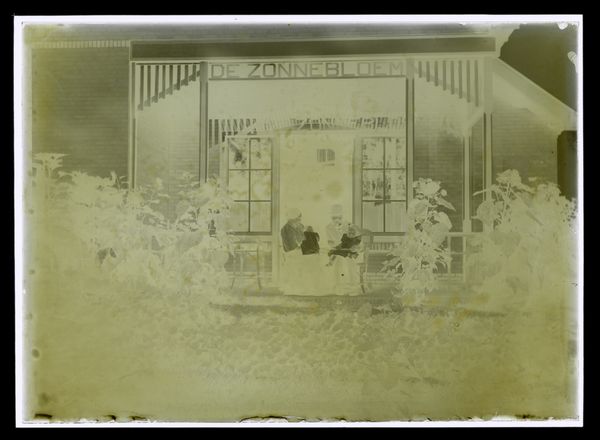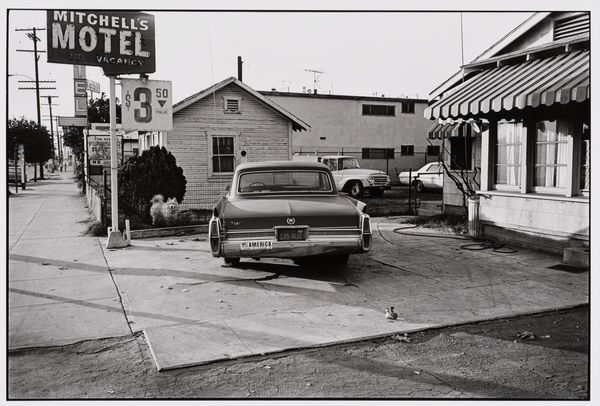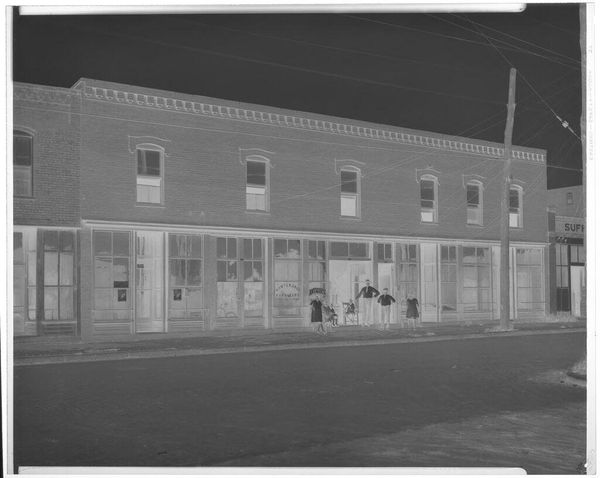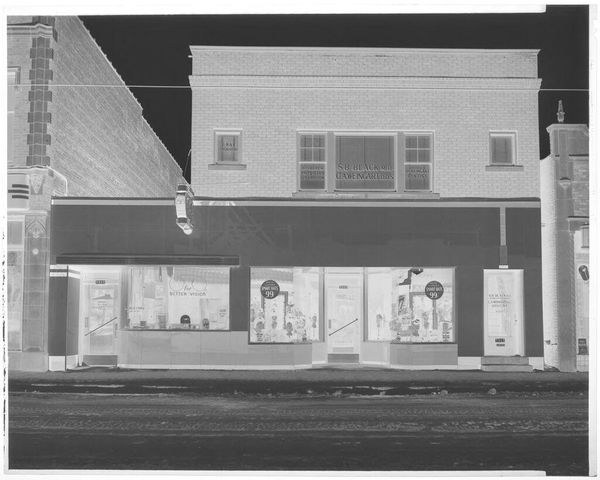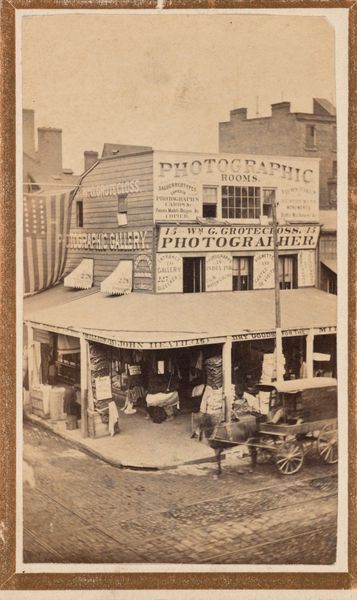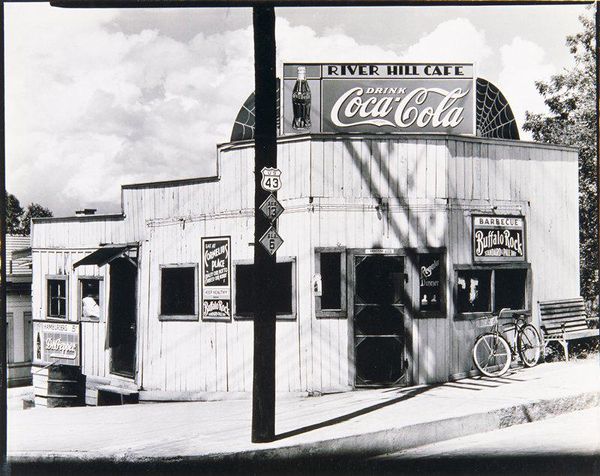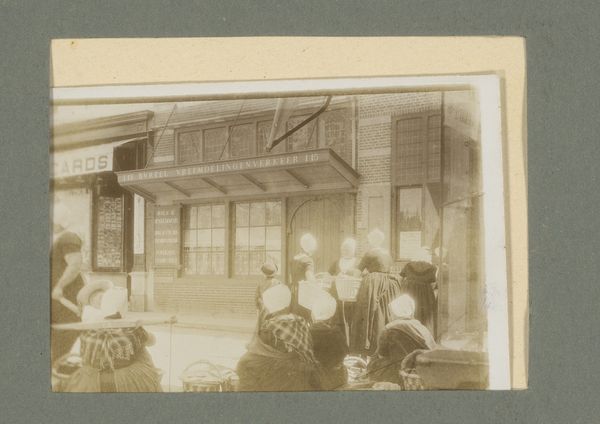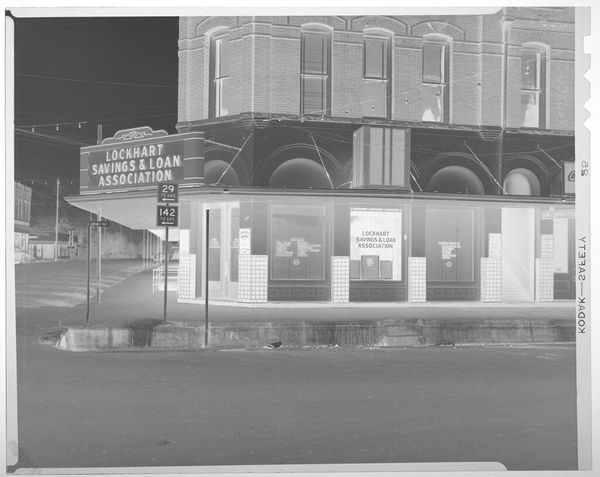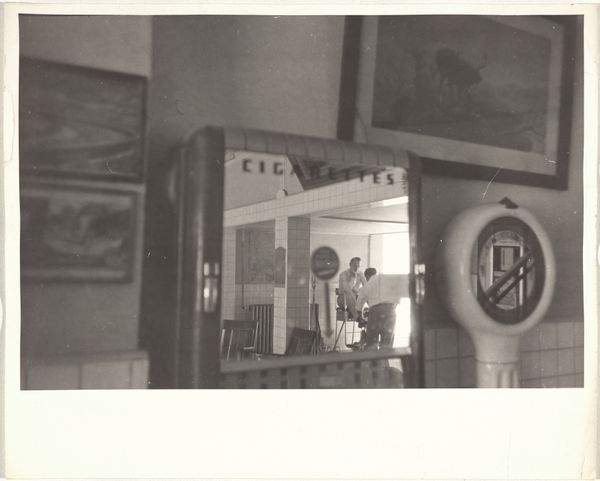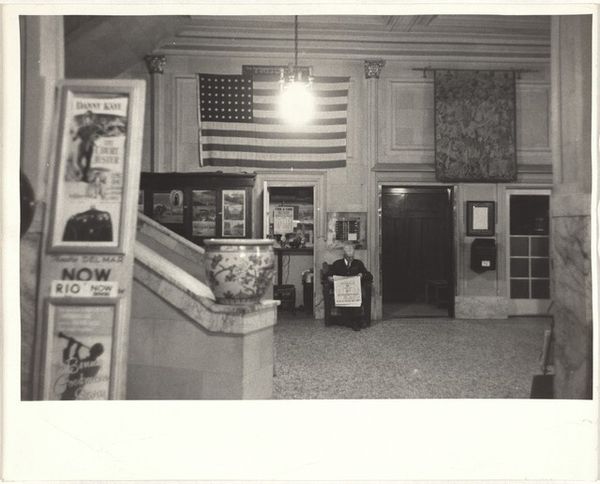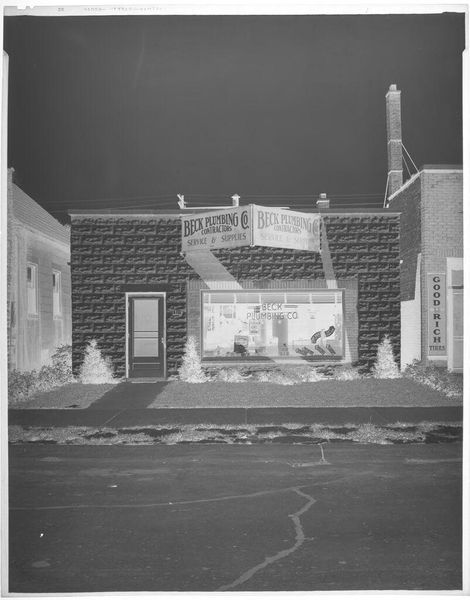
Dimensions: image: 6.9 × 13 cm (2 11/16 × 5 1/8 in.) plate: 8.3 × 17.8 cm (3 1/4 × 7 in.)
Copyright: National Gallery of Art: CC0 1.0
Curator: This is "Niagara Falls," a daguerreotype print made around 1860 by Platt D. Babbitt. At first glance, what are your thoughts? Editor: Stark! The monochromatic rendering coupled with the hyper-detailed surfaces give it an almost unsettling realism. Curator: Indeed. Focusing on the material reality, we should note that this is not a simple landscape but rather a commercial landscape. Babbitt, operating directly at the Falls, catered to the burgeoning tourist industry. The daguerreotype itself was a relatively democratic technology—more accessible than painting. Editor: I'm drawn to the rigid compositional structure. See how Babbitt divides the stereograph evenly. The near-identical store fronts are anchored by a tree at each margin, setting a defined border. Curator: Precisely! The photographic studio isn’t just passively capturing the landscape. Babbitt is actively shaping the public’s perception of it, turning sublime nature into a consumable commodity. He's marketing a simulacrum. The "Niagara Falls" becomes not just a geographical place, but a brand, processed through his specific workshop, evident on the sign. Editor: Right. I find it noteworthy how much depth and nuance Babbitt captures with subtle tonal gradations despite using a relatively new technology. It conveys this profound, almost mythical scene through an undeniably sharp rendering. Curator: It's vital to understand that photographers such as Babbitt were also businessmen—mediators between raw nature and the Victorian desire for entertainment, novelty, and sentimental reflection. His art is an industrial product in the age of expanding market. Editor: Yes, I find that the photograph freezes this particular moment in time, solidifying the formal aspects with stark immediacy. It makes me wonder if it would lose some visual tension in color, removed from this striking contrast. Curator: The lack of colour enhances the industrial narrative of production and consumption that underpinned it. Editor: Precisely! Understanding Babbitt’s commercial practice deepens our grasp on photographic materiality. I see this work, then, not as an unmediated glimpse but a study of structure and photographic artistry.
Comments
No comments
Be the first to comment and join the conversation on the ultimate creative platform.
